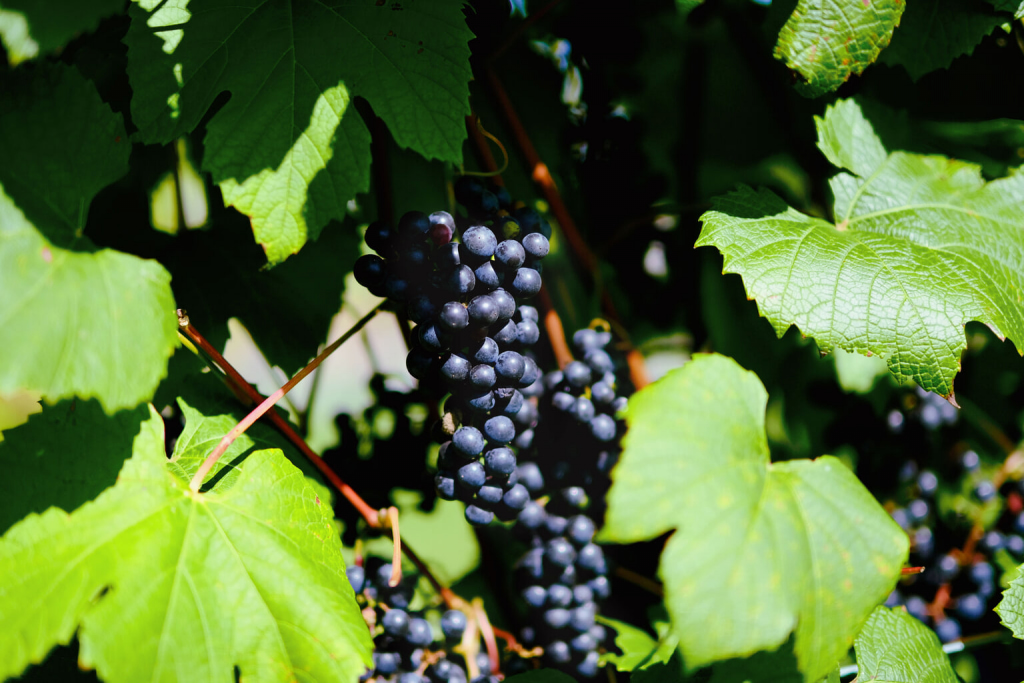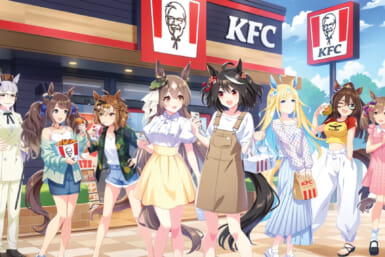For much of Japan’s rich history, nihonshu, or sake, has been at the forefront of beverage production. Historically wine did not suit the rice-centric diet of Japan but the shift toward the full-scale consumption of wine started around the time of the Tokyo Olympics in 1964 as food became more Westernized. Now, more than 200 wineries can be found throughout Japan, one of them being Domaine Takahiko in Hokkaido.
The winemaking philosophy and practices at Domaine Takahiko are unique, but are now starting to influence the Japanese wine market. The Japan Winery Award Council awarded the company a 5-star rating for the past four consecutive years, given to wineries that “produce a number of brands of outstanding quality.” To put that into perspective, out of 258 wineries and vineyards throughout Japan, just 15 received a 5-star rating in 2021.
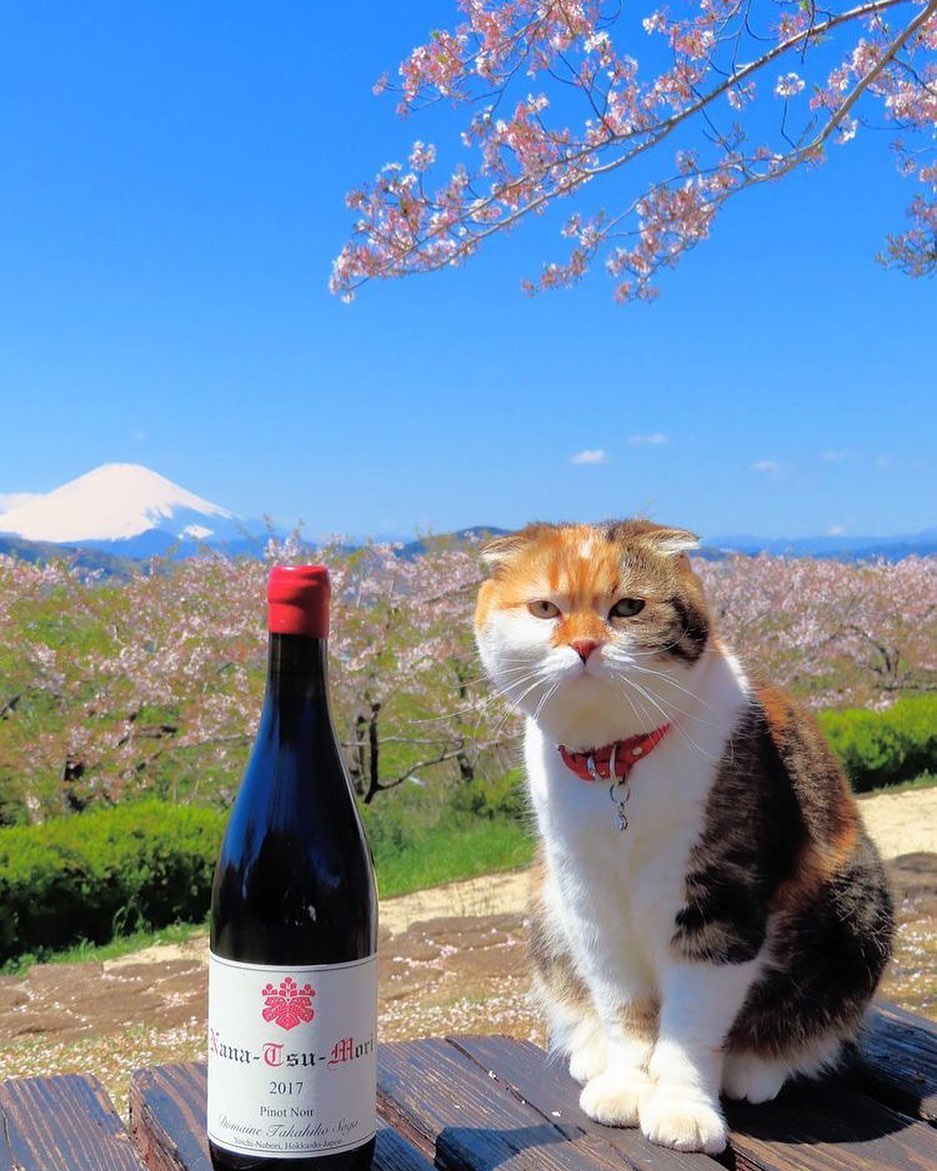
Domaine Takahiko’s Roots
Domaine Takahiko was founded in 2010 by Takahiko Soga. His parents run the Obuse Winery in Nagano Prefecture and passed on their passion for wine to him. Soga was previously a microbiologist before he was invited by Bruce Gutlove to join Coco Farm Winery. While working as the manager there, he traveled all over the world, visiting various wineries.
Along his travels, he was particularly moved by the Obernai region in France, which led him to buy 4.6 hectares of agricultural land in Yoichi Town in Hokkaido Prefecture which he named Nanatsumori. Here, Soga and his team produce 13 strains of Pinot Noir from 12,000 vine trees, all organically cultivated. In February 2020, Soga’s Nanatsumori Pinot Noir 2017 featured in the wine list of the esteemed restaurant Noma. In 2021, the Copenhagen-based establishment finished number one in the list of the World’s Best 50 Restaurants.
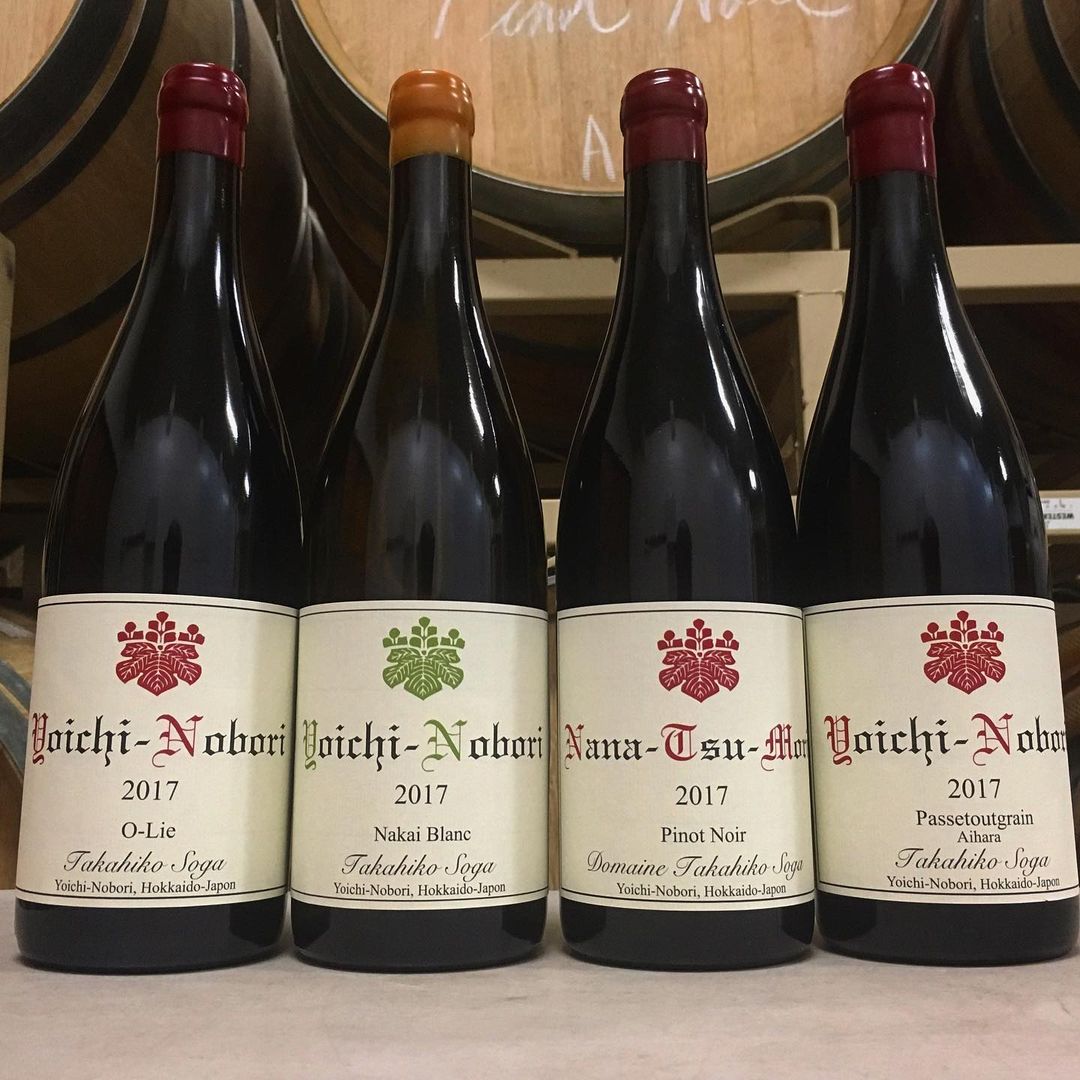
Within Japan, wineries in Yamanashi Prefecture are already producing global standard wine. However, the unique climate and location in Hokkaido make Dominaine Takahiko stand out among other wineries across the world. The vineyard is located on a hilltop 60 meters above sea level in Noborimachi, Yoichi-cho, on the northwest side of the prefecture.
Yoichi is relatively warm compared to the rest of Hokkaido, with little rainfall throughout the year. Surrounding mountains protect the vineyards from sea breezes and strong winds. The crops, therefore, aren’t as susceptible to diseases. The northern climate also leads to heavy snowfall in winter, preventing frost damage. Finally, the volcanic clay with weathered gravel and sand on top of andesite parent rock, contributes to good drainage.
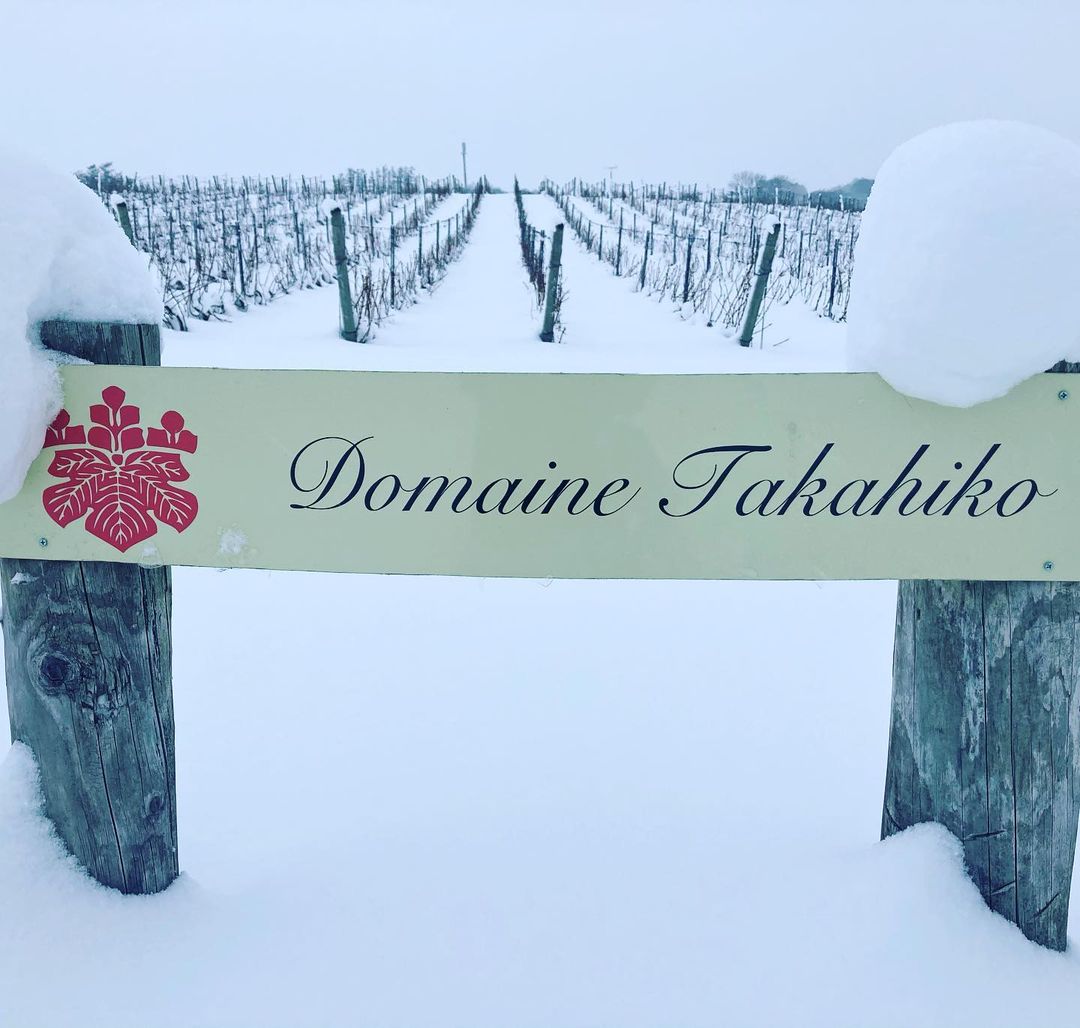
Hokkaido’s Terroir & Umami
Soga describes his wine as having “umami” — a word rooted in Japan’s culinary identity. Brewing wine that is familiar to the Japanese climate in terms of taste and aroma and can express the beauty of Japanese food is key to his philosophy. Seasonality is ripe throughout Japan’s culinary scene, which Soga would also like to express through his wine.
“I would like to brew wine that tastes as if you’re walking by Japanese shrines and temples in each of the four seasons,” he says.
Soil and water play a key role in the flavor profile of their grapes. In Japan, grapes are grown in soft water and soft volcanic soil, resulting in soft wines. This type of water easily expresses umami. Whereas in European countries, grapes are grown in hard water and hard limestone soils, resulting in hard wines. Drawing parallels to food, dashi stock cannot be extracted the same from hard water as soft.
The apprentice at Domain Takahiko, Toru Takamatsu (the youngest master sommelier in the world), says: “Having tasted many Pinot Noirs from around the world, Domaine Takahiko’s has a very unique aroma on the nose. To me this resembles the nose of an aged burgundy. I believe this shows what the terroir of Japan is about.”
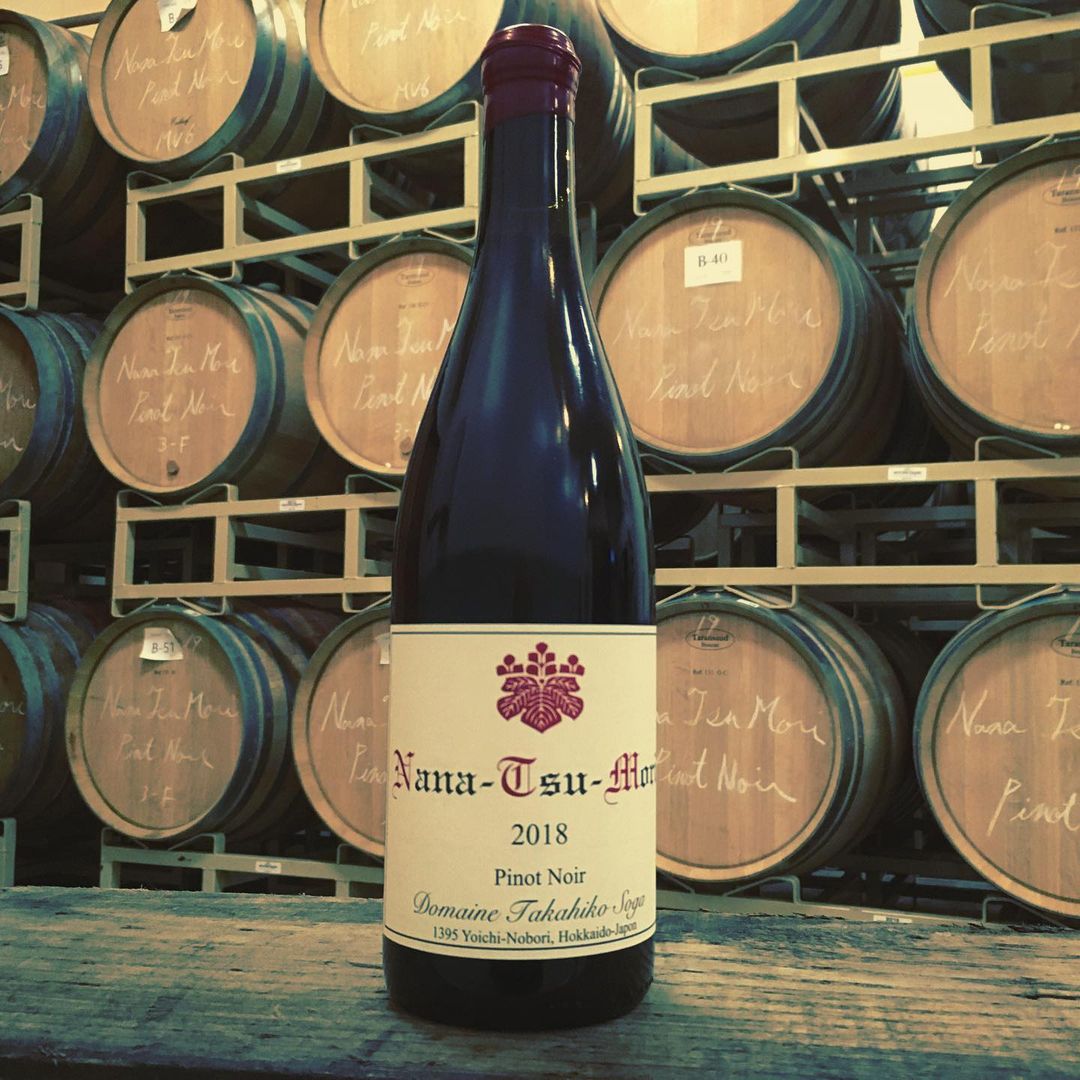
Wine Energizing a Whole Community
Another key philosophy to Soga is producing wine that any farmer can learn to do. Yoichi is traditionally an agricultural farmer’s town, with plenty of lavish farms. However, due to an aging society and declining popularity, many of these lands were abandoned. Despite this, there’s been a boom of wineries there. Communication has been a key factor to the city’s agricultural output. Experts share knowledge with each other and educate younger generations to keep the industry alive. Any farmer or any prospective vineyard owner can use the know-how of organic farming.
Soga believes that we must be at one with nature and adapt to environmental changes. He insists that farming methods which rely on chemical pesticides are not sustainable. Furthermore, winemaking at Domaine Takahiko utilizes wild yeast, whole cluster fermentation, little to no sulfur dioxide addition and natural fermentation as much as possible. His philosophy of brewing is to go back to the old days.

Finally, during harvest season, hundreds of volunteers visit Domaine Takahiko to help, as all harvesting is done by hand. “There are usually around 300 different people coming from all over Japan and this is due to the demand for the wine. Some join for experience, others join for fun. There is barrel tasting at the end of the harvest each day,” says Takamatsu.
Hokkaido is all about great food and the great outdoors. Read more about Japan’s far north:

